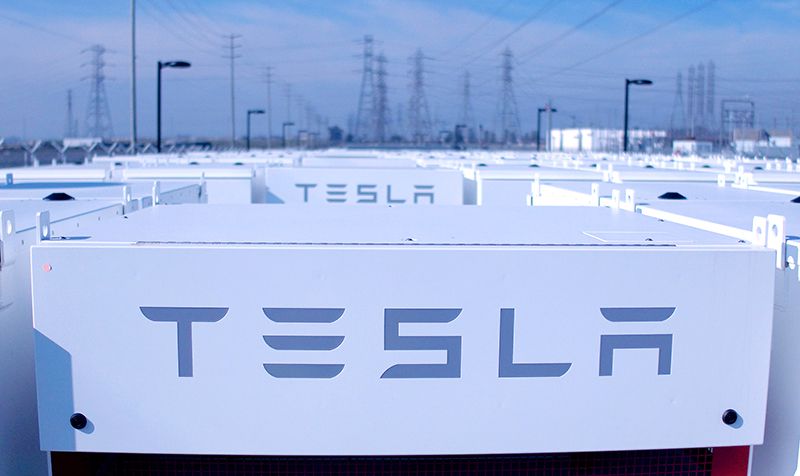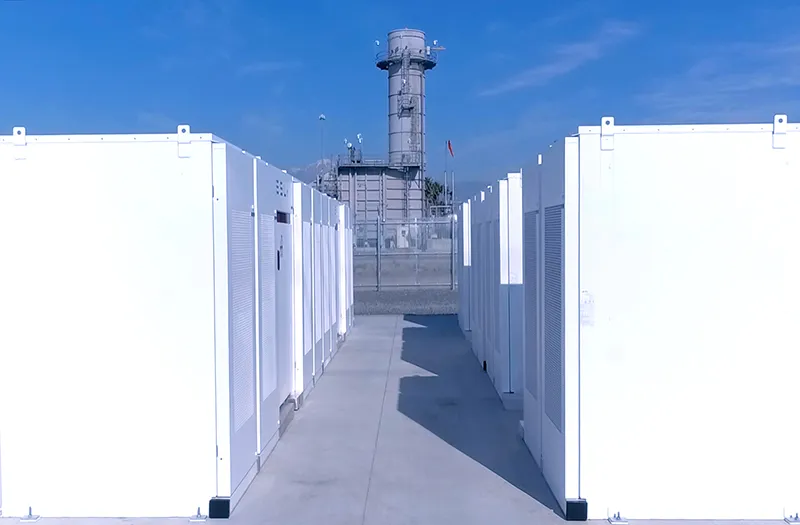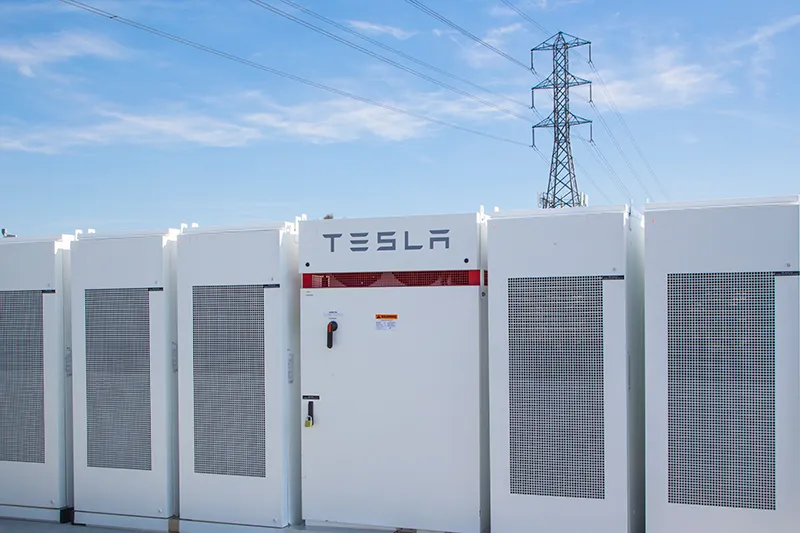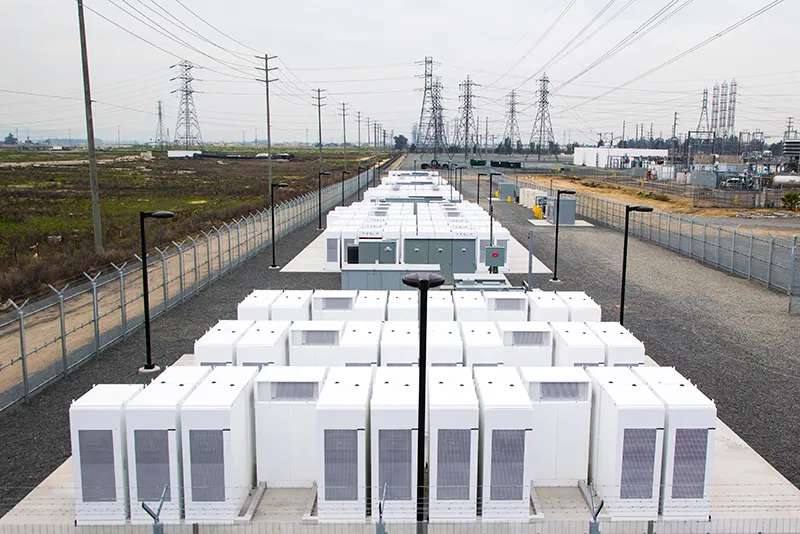Five Questions You Should Have About California’s New Tesla-Powered Battery Bank
The storage facility will collect energy when it’s readily available, and release it when demand is high. What does this mean for the future of energy?
/https://tf-cmsv2-smithsonianmag-media.s3.amazonaws.com/filer/0a/ee/0aeedad9-9108-418b-b8e5-0cf084324c72/tesla-battery-plant.jpg)
The basics are familiar: Tesla built batteries for a 20-megawatt power facility in Ontario, California. The project, in part a response to failures of supplemental gas-powered power plants, will allow Southern California Edison to store and release power throughout the day, helping balance the system and make it more efficient. Power stored during the day (when sun and wind are at their peak) can be released in evening hours, when energy is most needed (and most expensive).
The project was rushed through in just three months, a year after a leak at Southern California Edison’s Aliso Canyon gas storage facility released 1.6 million pounds of methane into the air. When that plant went offline, the Mira Loma district lost one of its sources of peak-hour energy; the “peaker plants,” which come online when demand is high, no longer had access to the gas they needed to operate.
Made up of 386 of Tesla’s second-generation Powerpack batteries, the storage facility will load up on energy when it’s cheap and readily available, and release it when demand is high, substituting for the peaker plants. The facility, run by Southern California Edison, is already operating, faster and cheaper than expected. But beyond the basics, what might this mean for Californians, and for the energy industry of the future? Here are five questions we still had, and their answers from Tesla, the California Public Utilities Commission and the National Renewable Energy Laboratory.
What scale are we talking about? How much of California’s need does it cover?
Very small, and very little. But what it does cover is important.
Power plants are often described by the number of houses they can power. It’s a rough measure at best, and even less applicable here. According to Tesla, rather than saying it can power 25,000 houses (an inaccurate measure of power availability to begin with), it’s better to say it’ll run 15,000 homes for 4 hours each, because that’s how the energy will be used. In raw numbers, 20 MW is 1/3000th of California’s energy need, which is around 60,000 MW.
While this is the biggest battery storage facility on Earth, to date, it’s small for Tesla—comparable to what it takes to make 1,000 electric vehicles, or about three to four days of production.
“By itself, this plant is very small. It’s more what it represents in terms of relieving a local constraint that’s real,” says Paul Denholm, a senior analyst at the National Renewable Energy Laboratory. “If you’re in that particular pocket of area that can’t get electricity, it doesn’t matter if it’s 50 MW or 1,000 MW, it’s my 3 kilowatts of demand in my house that matter.”
As with peaker plants, leveling off supply and demand can create a more balanced grid. The option to buy and sell energy on wholesale markets provides value as well.
“The value of a battery storage is not … generation, it’s that it actually provides load shifting,” says Michael Picker, president of the California Public Utilities Commission. “It takes existing generation and moves it around in time, and to some extent in place.”
What are the expected effects on consumers?
Minor. The plant is small, and it was built in response to another plant going offline.
In fact, if all goes well, consumers likely won’t even notice. “They’ll be blissfully able to turn their lights on at night after solar goes down, and be able to see the TV or whatever it is they’re cooking,” says Picker.
Another likely outcome, says Picker, is increased demand for “behind meter,” or home Powerpacks. Solar companies started selling to homeowners by offering power purchase agreements, which helps consumers recoup their investment. As battery prices continue to drop, battery manufacturers will be able to offer similar deals, and even integrate with solar companies for more efficient packages.
Is this really the innovation that will make widespread use of renewables feasible?
No. Or, not yet.
Wind and solar power peak during the day, but right now they make up such a small percentage of total power in the United States—around 6 percent, according to Denholm—that there’s not a sufficient need to store that power.
“When a wind turbine blows or a solar plant generates electricity, it goes onto the grid and it gets consumed,” he says. “It’s only in the future when we get a lot more electricity on the grid that we will need these enabling technologies to store renewable energy and shift it to a later time.”
The battery bank will allow the power utility that runs it to even out supply with demand. But that doesn’t just mean saving solar power for the evening. It also means running traditional power plants, including natural gas ones, at off-peak hours, like during the day and overnight.
Still, renewable energy is growing, and battery storage will be essential to powering communities while there’s no wind or sun.
“We are beyond the point where renewables are the challenge in terms of meeting our electrical needs,” says Picker. “You could take the subsidies away, you could take the mandates away, we would still get beyond 50 percent renewables in California, simply because it’s the best price. The challenge is, how do you weave that together into a system that actually meets customer needs and actually provides reliability?”
Where can we expect to see it employed in the future?
Because the scale is small, this type of facility will fill a niche need for now. But these battery banks actually provide a great deal of power for the space they require; the Ontario facility is under an acre in size, substantially smaller than a traditional peaker plant.
“The big thing is identifying places where there are pockets of load growth in places where there’s just not enough transmission,” says Denholm. Often, that’ll be in areas that are geographically restricted, either by population centers or landscapes, or by environmental regulations. A place like Ontario, which doesn’t have a lot of connections to the wider energy grid, is a perfect example. “Where those conditions exist, storage is just going to become more and more competitive.”
Additionally, this project was commissioned and built in just three months, an unexpectedly quick time frame that can enable a rapid response to power problems, relative to the construction of peaker plants, which can take years.
So, the growth in number and size of these facilities will be beneficial to power companies, even when there isn’t a state mandate for energy storage, as there is in California, says Picker.
How long until the batteries need to be replaced, and what happens to the old ones?
The lifespan of a battery depends on how often it’s charged and discharged, and these won’t necessarily be cycled daily, says Tesla. Rather, they’ll gain and disperse power on a rolling basis, and thus the life cycle is indeterminate.
However, the stacks of batteries are made up of discrete units that are easily plugged and unplugged, so it’s a simple matter to remove one that’s reached the end of its life. Tesla has a recycling facility at its Reno, Nevada, Gigafactory, where the batteries are built, and they will be returned to that factory to be broken down.



